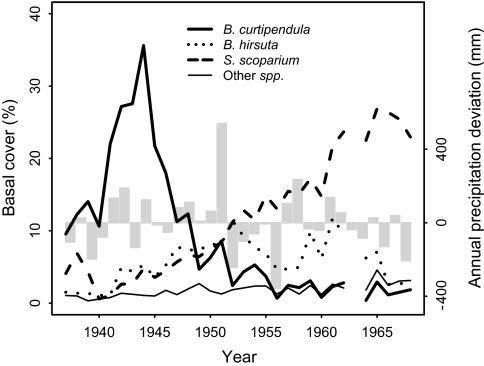Fig. 1.
Observed basal cover of the little bluestem community at Hays, Kansas, 1937–1968. Shown are means for the perennial grasses B. curtipendula, B. hirsuta, and S. scoparium, along with other species from a group of four 1-m2 quadrats located on shallow limestone soils within a livestock exclosure. Abundances were low early in the time series because of the Great Drought of the 1930s. The three focal grasses continue to co-occur in the permanent quadrats, with S. scoparium still the most abundant (P.B.A., unpublished data). The vertical bars show deviation from the mean annual precipitation of 580 mm. This period includes both the wettest water year on record at Hays (1,122 mm in 1951) and the driest (226 mm in 1956).

